
© Erik Tomasson. (Click image for larger version)
San Francisco Ballet
Program 1: 7 for Eight, Magrittomania, Pas/Parts
San Francisco, War Memorial Opera House
★★★★✰
24 January 2016
www.sfballet.org
San Francisco Ballet threw down a bit of a gauntlet with its first program of the 2016 season. The mixed bill, which opened with a matinee on Sunday, January 24, combined three works that represent what the company does best: neoclassicism, high theater and edgy contemporary work – starting with the former and ramping up to the latter.
Named for its structure, artistic director Helgi Tomasson’s 7 for Eight, created in 2004, presents eight dancers in duets, trios and quartets set to eight familiar Bach Keyboard Concertos. All but one is arranged for piano, rather than the original harpsichord; the piano actually produces a warmer sound that blends into the orchestra, where a harpsichord skates on top, calling attention to itself.
More emotional than cerebral, the choreography likewise blends. Tracing Balanchinean shapes in soft lines, it expands on classical vocabulary with flowing transitions, torqued épaulement and far-reaching lunges and extensions. Tiit Helimets and Mathilde Froustey were a potent match in the spotlit opening adagio; they match well with their long limbs and cool affect.

© Erik Tomasson. (Click image for larger version)
Taras Domitro’s solo combined double tours, sissones and a manège of coupé jetés, and poses that echoed Ali and Basilio. Tomasson retained the harpsichord only for Domitro’s solo; according to the program notes, he “wants audiences to hear how these concertos were played.” Second-guessing his choice to use piano undermines the pleasure of discovery in favor of needless didactics.
Yuri Possokhov is in his tenth year as SFB’s choreographer-in-residence, and the 2016 season bookends his tenure by presenting his first SFB work, 2000’s Magrittomania, in Program 1 and his most recent, 2015’s Swimmer, which is scheduled for Program 6. The high-concept expressionism of Swimmer was already fully developed in Possokhov’s debut work. Both are informed by Possokhov’s obsession with Western popular culture – raised in Russia and trained at the Bolshoi, he has said that he has immersed himself in it since joining SFB as a principal dancer in 1994. Both share strong visual elements, with projections and dynamic scrims and scenery. The two pieces also center on troubled central male characters who experience both anguish and pleasure, emphasized by musical scores that blend melodious strings, clanging bells, urgent brass and Broadway-esque broadcasting of emotional tension and release. The credit for Magrittomania’s music is Yuri Krassavin after Ludwig van Beethoven, whose “Eroica,” “Für Elise” and “Emperor” are among the works quoted.
In Magrittomania, a critical and audience hit when it premiered, Possokhov explores his emotional reactions to paintings by Belgian Surrealist René Magritte. Familiar icons abound – bowler hats and balloons, clouds and streetlights, gauze-shrouded lovers and giant green apples. Bare breasts also appear, as appliqués on the front of the four corps women’s gowns; no one ever accused Possokhov of subtlety.
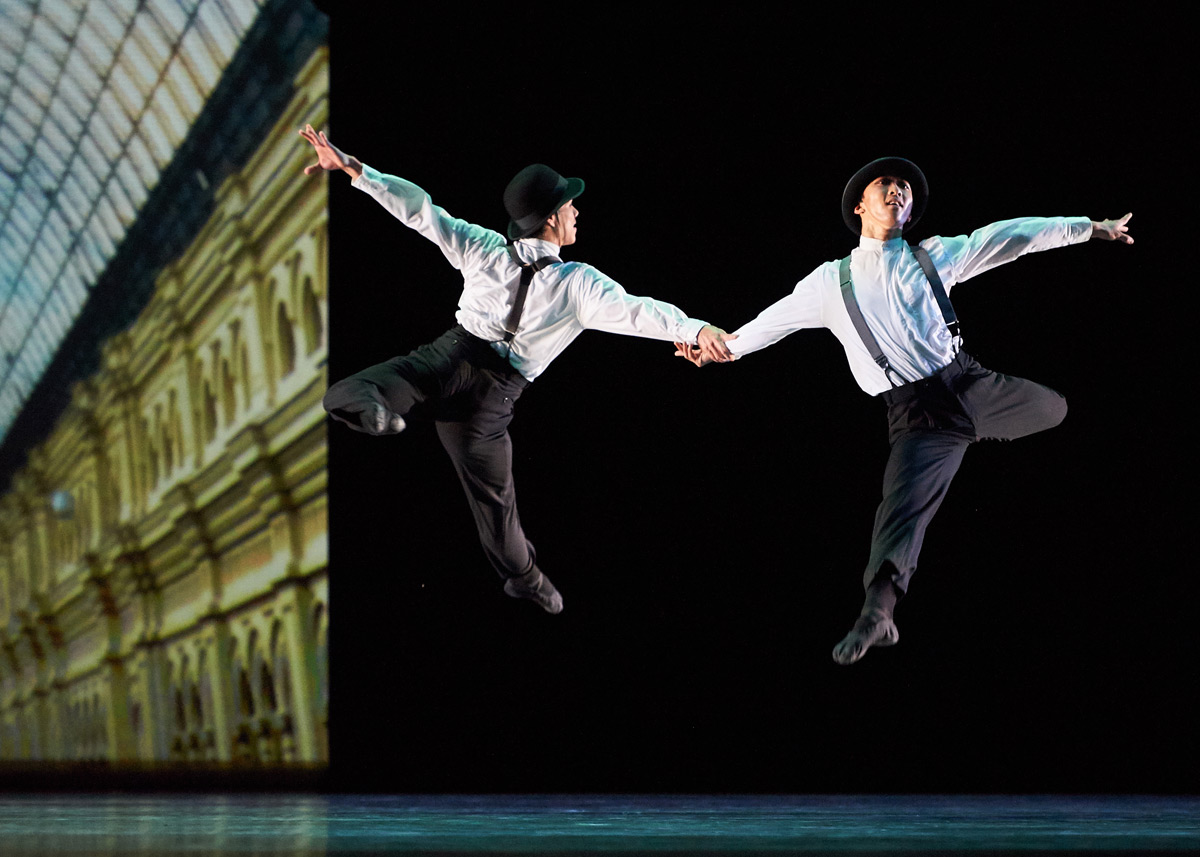
© Erik Tomasson. (Click image for larger version)
Gaze at Magrittomania for a while, and other aspects come into view. An unsettled melancholy runs through Davit Karapetyan’s dance as the anonymous main character, who alternately expands balletic movements to his furthest reach, dissolves into jazzy ensembles with Max Cauthorn, Esteban Hernandez and Wei Wang, or broods over Yuan Yuan Tan, a siren in a carmine gown. Possokhov created the role on Tan, and she still dances it with liquid flexibility and a commanding presence. She enters about three-quarters through the piece for their climactic pas de deux, then disappears again, and one wonders what feelings their connection and separation embody for the choreographer.
These two excursions into abstraction primed the audience for the North American premiere of William Forsythe’s Pas/Parts. A postmodern ballet created on Paris Opéra Ballet in 1999, Pas/Parts appealed to me most as a time capsule of where Forsythe’s head was at at that point in time, and how today’s SFB dancers would adapt to movement created on POB.
Alas, Forsythe is an incorrigible tinkerer. According to the program notes, while setting the work on SFB dancers and collaborating with them in the studio, he rechoreographed three-quarters of it. The piece is now an “exploration in movement,” apparently so hugely informed by individual dancers that it is likely to read differently on each cast. The recorded score, however, by frequent Forsythe collaborator Thom Willems, is the same – an electronic mishmash of thunderous rumbles, gongs and chimes, sampled voices sped to a chipmunk trill and orchestral overlays.
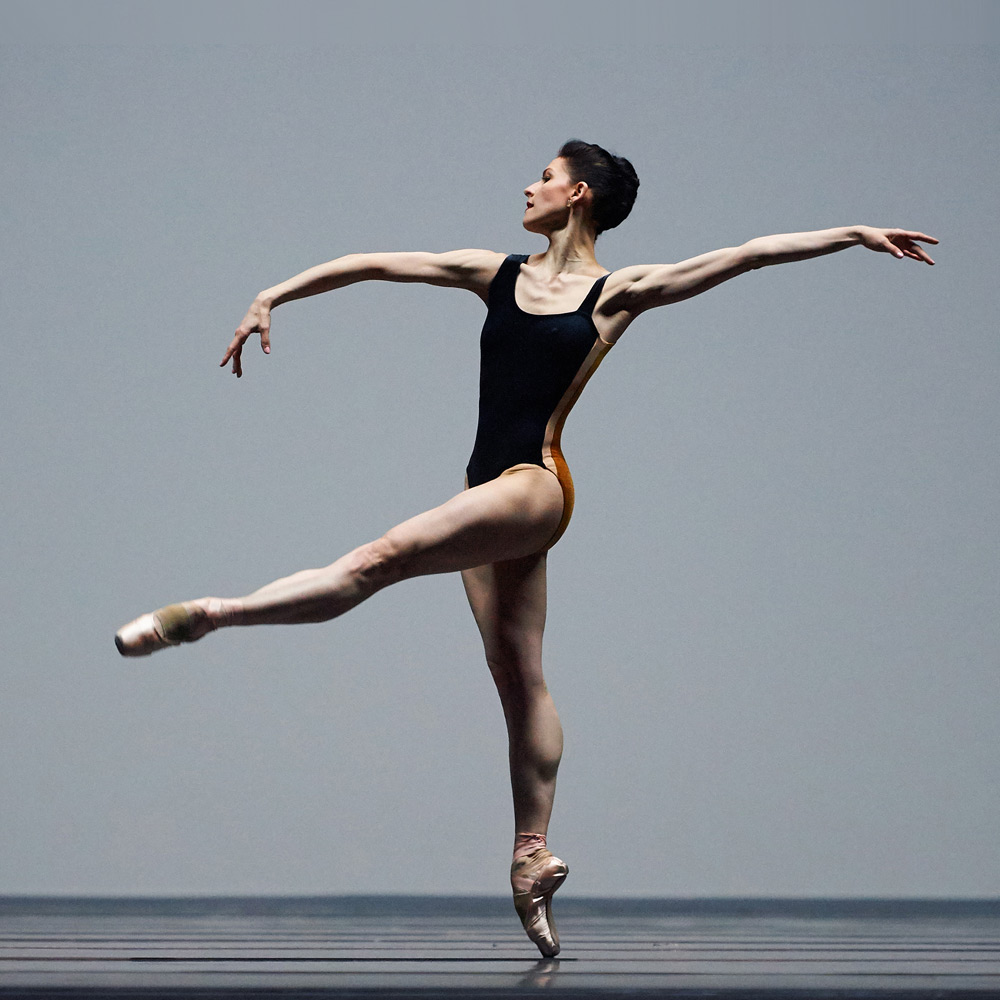
© Erik Tomasson. (Click image for larger version)
So, what of it then? Fifteen dancers enter and leave, pausing onstage in solos, duets, trios and ensembles of undulations, hip gyrations, arms that wave from third to fourth position and back again over contrapuntal torsos, tendus galore. Based on movements that felt “natural” to the dancers and were driven to an extreme by Forsythe, this new Pas/Parts – world premiere might have been a more accurate description – suffers from the ill that besets many similarly made works: the movement feels really good to the dancers, but flatlines visually because of overly repetitive phrases and motifs. However eye-catching at the onset of a work, and Pas/Parts opens by slapping you in the face with Sofiane Sylve alone and at her most serpentine, symmetry eventually tires the eye.
Beauty periodically emerges from and recedes back into the blur. Maria Kochetkova demonstrating the perfection of an academic rond de jambe, or molding herself over and around Francisco Mungamba in their duet. Exquisite unsupported développés on pointe in a duet by Dores André and Frances Chung. A tremendous solo by Joseph Walsh, with a bounding manège of low jetés that were as mesmerizing in their own way as a ring of revoltades – proof, for those who need it, that the thrill is in the dancer, not in the tricks.
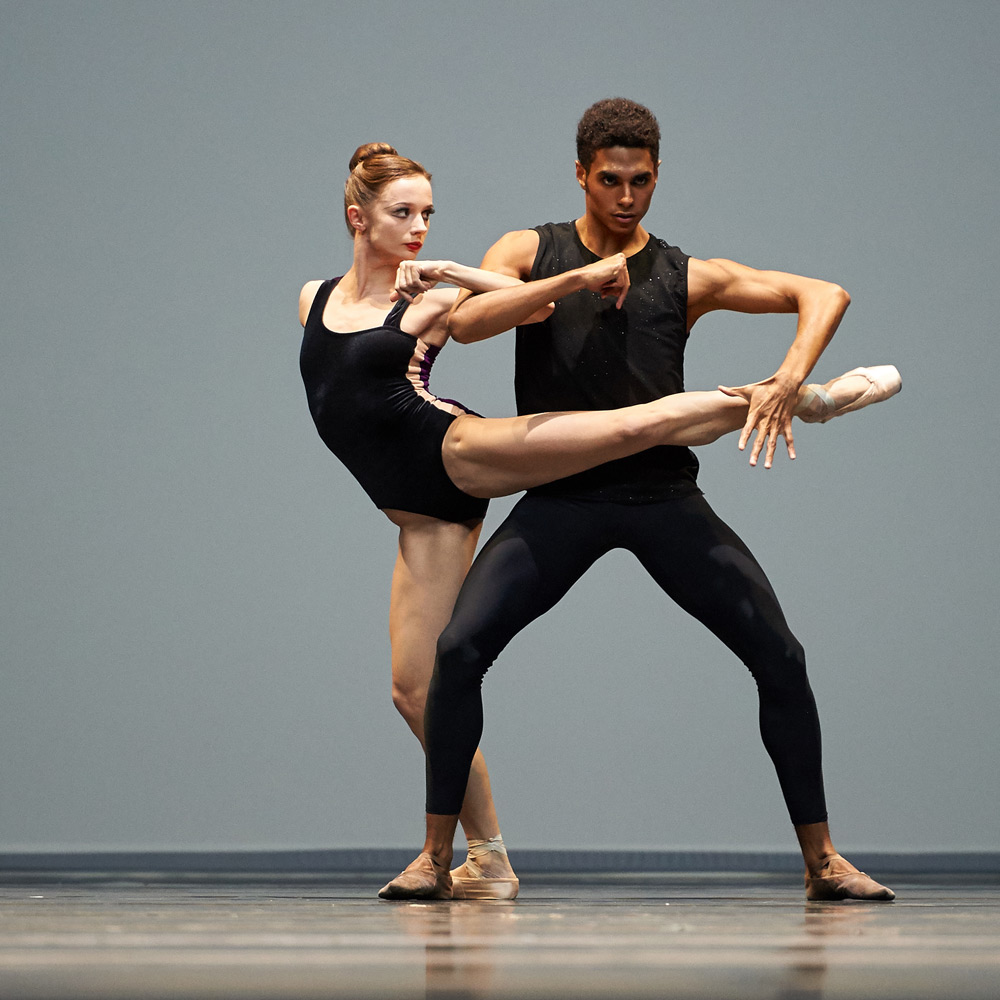
© Erik Tomasson. (Click image for larger version)
And yet, Pas/Parts doesn’t care what I or anyone else thinks. Unlike the ingratiating pleasantries of 7 for Eight, or Magrittomania’s palatable theatricality, Pas/Parts neither asks for approval nor concerns itself with censure. It is what it is, it is in your face, and then it is done. And that is what is marvelous about it. Would that more choreographers would offer that kind of brisk and bracing slap in the face.











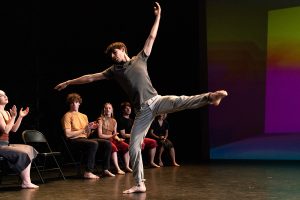

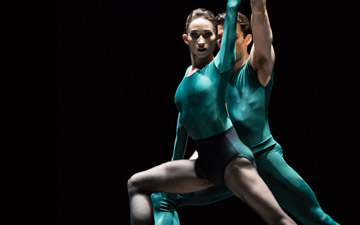
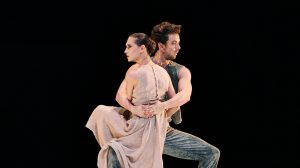
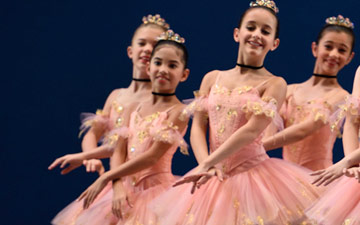

On 2 Feb 2016 SFB made us aware of the following: “William Forsythe has confirmed that he is updating the title of his work to Pas/Parts 2016.”